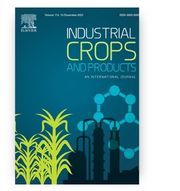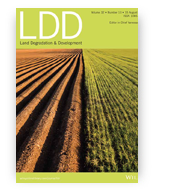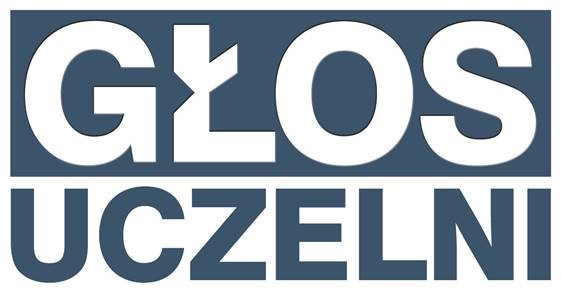
Research papers of the month – June 2023
We present the highest-score research papers of June 2023. These papers have ben published in journals with the highest Ministerial score – 200 points.
Raman spectroscopy and XRF identification: First step in industrial wastewater management
Paweł Lochyński; Magdalena Szymańska; Sylwia Charazińska; Emilia Poznańska; Justyna Kubicz
Water Resources and Industry
Ministerial score = 200.0
Journal Impact Factor (2023) = 4.206 (Q2)
 Considering the environmental risk, industrial facilities should strive to maximise the effectiveness of on-site treatment processes. It is important to detect the types of pollutants in wastewater and their concentrations, which can be challenging in industrial conditions. In this study, industrial wastewater samples from pickling and electropolishing of stainless steel were analyzed through Raman spectroscopy and XRF techniques using portable instruments. A 3-step procedure for the rapid identification of type of wastewater was proposed. The identification and analysis of peaks present in the Raman spectroscopy at 900, 990, 1050, 1380 cm−1allows for the differentiation of wastewater type and dilution. The final step is to employ XRF measurements to determine the approximate content of the investigated elements. The use of portable analytical instruments for the estimation of contamination levels is essential for the management of the industrial wastewater neutralization process as well as during emergency operations in cases of accidents.
Considering the environmental risk, industrial facilities should strive to maximise the effectiveness of on-site treatment processes. It is important to detect the types of pollutants in wastewater and their concentrations, which can be challenging in industrial conditions. In this study, industrial wastewater samples from pickling and electropolishing of stainless steel were analyzed through Raman spectroscopy and XRF techniques using portable instruments. A 3-step procedure for the rapid identification of type of wastewater was proposed. The identification and analysis of peaks present in the Raman spectroscopy at 900, 990, 1050, 1380 cm−1allows for the differentiation of wastewater type and dilution. The final step is to employ XRF measurements to determine the approximate content of the investigated elements. The use of portable analytical instruments for the estimation of contamination levels is essential for the management of the industrial wastewater neutralization process as well as during emergency operations in cases of accidents.
DOI:10.1016/j.wri.2023.100216
A review on thymol-based bioactive materials for food packaging
Adrián Rojas; Dušan Mišić; Carol López de Dicastillo; Irena Zizović; Eliezer Velásquez; Danae Gutiérrez; Gonzalo Aguila; Cristian Patiño Vidal; Abel Guarda; María José Galotto
Industrial Crops and Products
Ministerial score = 200
Journal Impact Factor (2023) = 6.449 (Q1)
 Strict legislation in developed countries concerning the usage and disposal of many chemicals, during the last few decades, brought industrial innovations based on sustainable green processes and nature-based solutions, eliminating toxic wastes and opening the space for broader implementation of natural bioactive compounds and extracts. Thymol, a natural monoterpene with a broad spectrum of strong biological activities, began to be widely applied in science and industry, including the production of active food packaging materials. In this framework, this article provides a comprehensive review on the use of thymol for active food packaging, summarizing reported technologies and explaining the impact of its addition on the thermal, structural, mechanical, and barrier properties of polymeric films. Moreover, this review analysis effects of films’ physical properties on the release of thymol and revises the strategies to tune the release kinetics. It also provides a critical and comprehensive analysis of the published data on the antimicrobial properties of active films containing thymol. Based on the presented data, knowledge gaps were identified, and possible research trends were discussed. The analysis of the presented technologies showed that supercritical solvent impregnation might overcome the drawbacks of conventional processes, such as high thymol loss and its uneven distribution. The reviewed data indicated that bioactive polymeric materials containing thymol, especially PLA, might have applications in flexible and semirigid packaging because of the improvement of polymer ductility. As a successful strategy of tunning thymol’s release kinetics, its inclusion into structures such as cyclodextrins and metal-organic frameworks is identified. Finally, it was shown that the antimicrobial activity of the active food packaging and thymol’s diffusivity varied significantly depending on the applied technology, the nature of the polymer, and other added compounds.
Strict legislation in developed countries concerning the usage and disposal of many chemicals, during the last few decades, brought industrial innovations based on sustainable green processes and nature-based solutions, eliminating toxic wastes and opening the space for broader implementation of natural bioactive compounds and extracts. Thymol, a natural monoterpene with a broad spectrum of strong biological activities, began to be widely applied in science and industry, including the production of active food packaging materials. In this framework, this article provides a comprehensive review on the use of thymol for active food packaging, summarizing reported technologies and explaining the impact of its addition on the thermal, structural, mechanical, and barrier properties of polymeric films. Moreover, this review analysis effects of films’ physical properties on the release of thymol and revises the strategies to tune the release kinetics. It also provides a critical and comprehensive analysis of the published data on the antimicrobial properties of active films containing thymol. Based on the presented data, knowledge gaps were identified, and possible research trends were discussed. The analysis of the presented technologies showed that supercritical solvent impregnation might overcome the drawbacks of conventional processes, such as high thymol loss and its uneven distribution. The reviewed data indicated that bioactive polymeric materials containing thymol, especially PLA, might have applications in flexible and semirigid packaging because of the improvement of polymer ductility. As a successful strategy of tunning thymol’s release kinetics, its inclusion into structures such as cyclodextrins and metal-organic frameworks is identified. Finally, it was shown that the antimicrobial activity of the active food packaging and thymol’s diffusivity varied significantly depending on the applied technology, the nature of the polymer, and other added compounds.
DOI:10.1016/j.indcrop.2023.116977
Influence of contamination with diesel oil on water sorptivity and hydrophobicity of sandy loam soil
Edyta Hewelke; Jerzy Weber; Dariusz Gozdowski; Piotr Hewelke
Land Degradation & Development
Ministerial score = 200.0
Journal Impact Factor (2023) = 4.377 (Q2)
 This paper shows the changes in water sorptivity (Sw) and hydrophobicity following soil contamination with petroleum hydrocarbons (PHs) under different soil moistures. Laboratory experiments were carried out to verify that contamination with PHs reduces Sw, thus affecting the infiltrability, which in practice influences the field water capacity and the availability of water for plants. Soil water repellency (SWR) was estimated by the repellency index (R) and water drop penetration time (WDPT). The increase in PHs contamination contributed to SWR and caused a significant decrease in Sw. With the decrease in moisture, the water sorptivity of the soil increased, reaching its maximum at 0.12–0.15 cm3 cm−3, which was the threshold value in the case of the analysed soil, and then decreased drastically. The R index and the WDPT revealed a similar trend, inversely related to the level of soil contamination with PHs. The increase in SWR and the accompanying decrease in Sw made the soil less resistant to drought. The total amount of water available to plants in the control soil was 19.04%, whereas contamination with PHs equal to 100 g kg−1 caused a decrease to 6.36%. The almost threefold decrease in the total amount of water has a fundamental influence on increasing the risk of soil drought. The results obtained indicated that the interrelationship presented between the level of contamination with PHs, water sorptivity, SWR and soil moisture are the keys to predicting the environmental effects of contamination with PHs. The obtained results indicate that the undertaken remediation measures aimed at restoring the hydrological function of the soil system should be preceded by an assessment of soil hydrophobicity.
This paper shows the changes in water sorptivity (Sw) and hydrophobicity following soil contamination with petroleum hydrocarbons (PHs) under different soil moistures. Laboratory experiments were carried out to verify that contamination with PHs reduces Sw, thus affecting the infiltrability, which in practice influences the field water capacity and the availability of water for plants. Soil water repellency (SWR) was estimated by the repellency index (R) and water drop penetration time (WDPT). The increase in PHs contamination contributed to SWR and caused a significant decrease in Sw. With the decrease in moisture, the water sorptivity of the soil increased, reaching its maximum at 0.12–0.15 cm3 cm−3, which was the threshold value in the case of the analysed soil, and then decreased drastically. The R index and the WDPT revealed a similar trend, inversely related to the level of soil contamination with PHs. The increase in SWR and the accompanying decrease in Sw made the soil less resistant to drought. The total amount of water available to plants in the control soil was 19.04%, whereas contamination with PHs equal to 100 g kg−1 caused a decrease to 6.36%. The almost threefold decrease in the total amount of water has a fundamental influence on increasing the risk of soil drought. The results obtained indicated that the interrelationship presented between the level of contamination with PHs, water sorptivity, SWR and soil moisture are the keys to predicting the environmental effects of contamination with PHs. The obtained results indicate that the undertaken remediation measures aimed at restoring the hydrological function of the soil system should be preceded by an assessment of soil hydrophobicity.
DOI:10.1002/ldr.4646
Seasonal and spatial variations of antibiotic resistance genes and bacterial biodiversity in biofilms covering the equipment at successive stages of drinking water purification
Mirela Wolf-Baca; Agata Siedlecka
Journal of Hazardous Materials
Ministerial score = 200.0
Journal Impact Factor (2023) = 14.224 (Q1)
 The presence of ARGs (antibiotic resistance genes) in the aquatic environment is a serious threat to public health especially in environmental biofilms as natural reservoirs of ARGs in water treatment plants (WTP). It has been shown that the treatment technology and source of water have a significant impact on the abundance and type of genes determining antibiotic resistance. The following indicator genes were proposed that should absolutely be controlled in environmental biofilms: intl1, sul2, sul1, tetA, blaOXA, and blaTEM. In both studied WTPs, the highest number of copies was determined for the intI1 gene. Among the tested ARGs, the highest values were obtained for genes sul1 and tetA. The qPCR analysis also revealed that the amounts of determined ARGs decreased in the following order: sulphonamides>carbapenems >tetracyclines > β-lactams >macrolides. The dominant bacterial types in all analysed samples were Proteobacteria and Bacteroidetes. Both ARGs and bacterial biodiversity was determined rather by sampling site (spatial variation) than seasonality. The obtained results show that biofilms are reservoirs of ARGs. This may affect the microbiological quality of water entering the water system. It is therefore necessary to include their analysis in the classical studies of water quality.
The presence of ARGs (antibiotic resistance genes) in the aquatic environment is a serious threat to public health especially in environmental biofilms as natural reservoirs of ARGs in water treatment plants (WTP). It has been shown that the treatment technology and source of water have a significant impact on the abundance and type of genes determining antibiotic resistance. The following indicator genes were proposed that should absolutely be controlled in environmental biofilms: intl1, sul2, sul1, tetA, blaOXA, and blaTEM. In both studied WTPs, the highest number of copies was determined for the intI1 gene. Among the tested ARGs, the highest values were obtained for genes sul1 and tetA. The qPCR analysis also revealed that the amounts of determined ARGs decreased in the following order: sulphonamides>carbapenems >tetracyclines > β-lactams >macrolides. The dominant bacterial types in all analysed samples were Proteobacteria and Bacteroidetes. Both ARGs and bacterial biodiversity was determined rather by sampling site (spatial variation) than seasonality. The obtained results show that biofilms are reservoirs of ARGs. This may affect the microbiological quality of water entering the water system. It is therefore necessary to include their analysis in the classical studies of water quality.
DOI:10.1016/j.jhazmat.2023.131660










